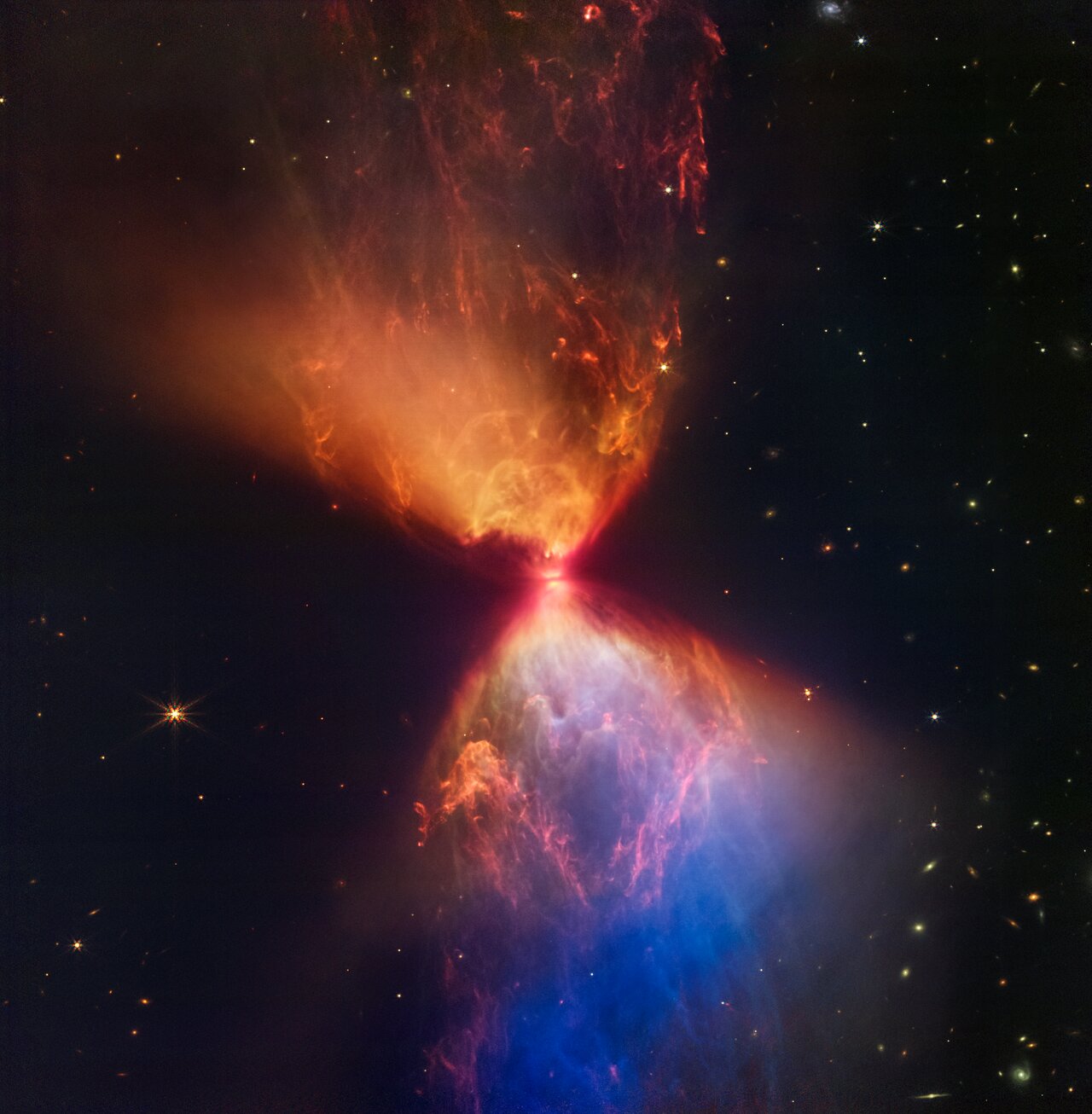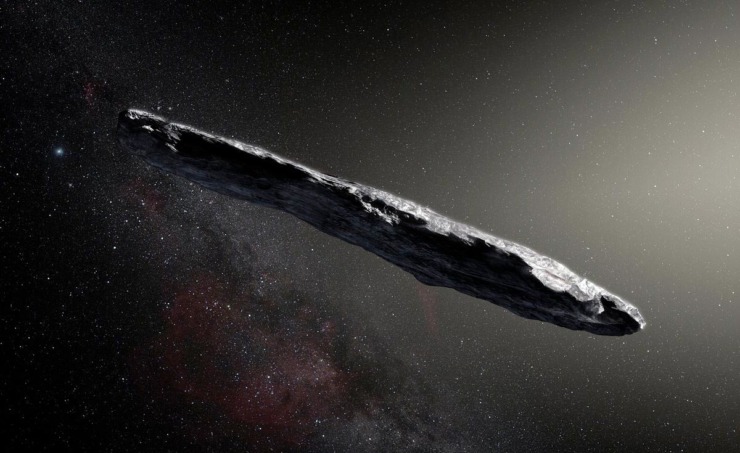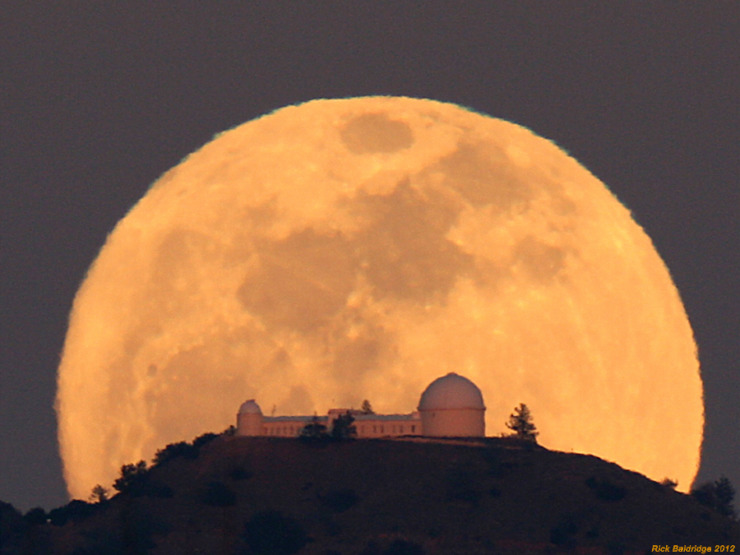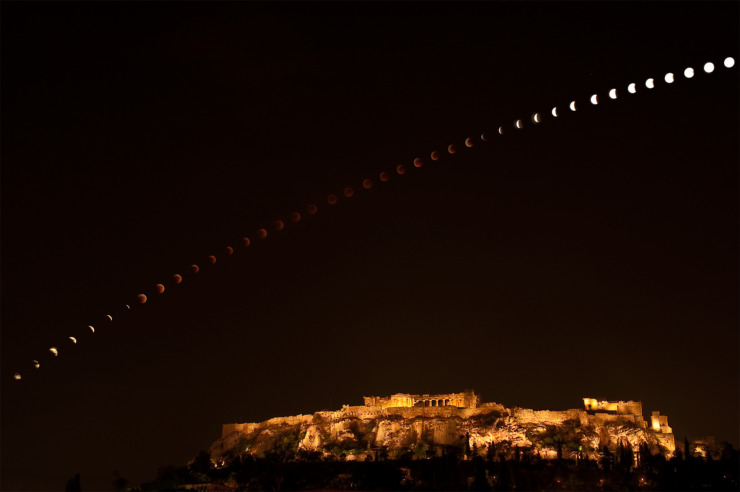One of strongest hopes astronomers have for the James Webb Space Telescope is that it will reveal to us many of the details of how stars are born. Because a baby star and the “nursery” of gas and dust around it are just warming up, we can learn a lot more from its infrared rays (heat rays) than from visible light. Here we see an infrared view of part of such a region of cosmic raw material, cataloged as cloud L1527 in the constellation of Taurus. Inside it is a nameless “proto-star” — an object that is falling together under its gravity, but is not yet an adult (visibly shining) star.
The star, which is only about 100,000 years old, is hidden inside a small dark doughnut of gas and dust, seen as a small dark line in the center of the picture, where the 2 sides of the glowing hourglass shape come together. From that doughnut of dark material, it is possible that a family of planets may form around the infant star — which is also still gathering material from the doughnut around it.
Energy escaping from the forming star can travel upward and downward in the picture, coming out from the doughnut hole in the center. Each triangular cavity in the local gas and dust has been hollowed out by this energy. Where the dust is thicker, the glow is seen in orange, and where it is thinner, we see it as more blue. For reasons that are less clear, note that the shape of the hourglass is straight at the upper left and lower right, but curved at the upper right and lower left.
The infant star, like infant children, also burps occasionally, as it gathers more material from its disk. The “burped-up” material can be seen as curved arcs in the glowing hourglass. To be able to see so much clear detail in the birth process of a single star is a wonderful gift to astronomers. Our own Sun and solar system may have formed like this about five billion years ago.




